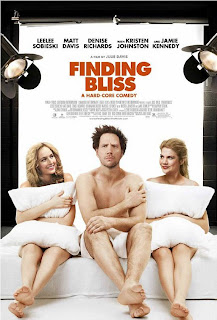"Black Rainbow" a strange, abstract, haunting trip
Beyond the Black Rainbow (2012)
110 min., rated R.
"Beyond the Black Rainbow" is a full-bore fever dream destined for cult status and a long run at midnight-movie showings. However, in the special case of this one, crowds will be too hypnotized by the screen to jeer and throw spoons. The staggeringly left-field feature debut of second-generation writer-director Panos Cosmatos (son of "Tombstone" director George P. Cosmatos) goes beyond "Name That Auteur" homage, but probably not psychedelic art experiment. That might explain why many will suffer from a "Tree of Life"-sized existential crisis by the end of it, but a haunting motion picture that takes hold of a viewer's senses is nothing to sneeze at. It's an expertly made amalgam of sci-fi, horror, head trip, symphony, and mood piece, and yet, this is a unique, disorienting sensory experience untethered to any individual genre and unlike anything else out there right now or predicted to be released this year.
Set in Reagan-era 1983, within the sterile Arboria Institute, the facility's elderly founder, Dr. Mercurio Arboria (Scott Hylands), has dreamt to achieve elusive happiness and inner peace for his patients through neuropsychology and new therapeutic technologies. His mysterious successor, Dr. Barry Nyle (Michael Rogers), uses pharmacology, sensory therapy, and energy sculpting to do tests on the mute, heavily sedated Elena (Eva Allan). Counselling her on the other side of a glass partition, he finds the highlight of his day in bringing tears to Elena's eyes. Physically, she is confined in a cell from the outside world and her mind is controlled by the technology of a diamond-shaped light pulse. If Elena tries to escape, Nyle will descend into the darkest depths of insanity to bring back his most gifted specimen. Rogers is hypnotic and deeply creepy as Dr. Nyle, an unshakable presence worthy of figuring into anyone's nightmares. If Rogers' shifty physical appearance doesn't creep one out, the ominous cadence of his careful, monotone voice is just enough. Distant from his always-napping wife and ritually popping five blue pills before bed, Dr. Nyle's transformation into a demonic psychopath only makes sense. The fair Eva Allan is mostly asked to just "be," instinctively playing Elena with her body language and ability to hit emotional cues rather than speaking a word.
Moving at a deliberate gait, but mesmerizingly so, "Beyond the Black Rainbow" puts us into a dream-like, drug-haze trance. Made purposefully impossible to describe or encapsulate the minimalist plot, writer-director Cosmatos doesn't hand out narrative answers for free. Just soak in the phantasmagoric imagery and stimulating sounds, and you'll feel entranced anyway. Even though it was made for very little means and with minimal resources, that doesn't stop Cosmatos from creating a trippy, distinctive mood and a visionary retro/quasi-futuristic world. Formed by imagery and sound, almost fetishistically to the works of Stanley Kubrick, David Lynch, Dario Argento, and David Cronenberg, the picture is scored, lit, and shot like a nightmarish funhouse. A majority of the film's unnerving thrill goes to the nifty, throbbing synthesizer score by Jeremy Schmidt, who most certainly pays debt to John Carpenter's "Halloween" theme. (Fellow groupies of Nicolas Winding Refn's "Drive" might even feel a salute to that film's '80s-tinged sensibility.) Synchronized with every sound is Norm Li's crisp, striking cinematography. A 1966 flashback to mentor and teacher, presented with smoke and then a whiteout with ink blots, is a visual humdinger of grotesque beauty. Elena's escape through an elevator shaft is precisely crafted on a technical level and positively freaky and urgently felt on a visceral level. The last fifteen minutes take on a sort-of slasher-pic vibe, which shouldn't be taken as a negative but goes to show that no genre is out of Cosmatos' directing range.
So radically different from any mediocre studio release, Cosmatos' film defies expectations and conventional storytelling. Incorporating telepathy and a neon hellscape guarded by alien-headed stormtroopers, the filmmaker refuses to decipher what's at the end of his abstract, surreal "Rainbow." Like nearly all of the great auteurs' works that influence Cosmatos, this reverential albeit singular piece of work is not easy to embrace but difficult to ignore. It's indescribably strange and also pretty cold to the touch. That said, it's not for all tastes, but rewarding for the most adventurous viewer. What it all adds up to might not be exactly clear, but surely in a class by itself, "Beyond the Black Rainbow" should boggle the mind and linger with you from the time you go to sleep, in your dreams, to the time you wake up.
Grade: B











Comments
Post a Comment